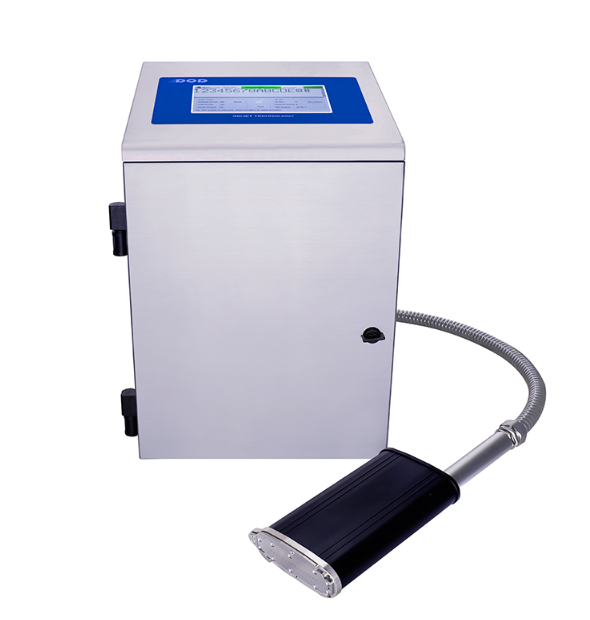A DOD large character inkjet printer is an industrial printing system designed for marking and coding applications. It is used to print large characters on various surfaces, such as cardboard boxes, cartons, pallets, and other porous or non-porous materials commonly used in industrial settings. These printers are widely used in industries like packaging, logistics, food and beverage, building materials, and more, where clear and visible marking is essential for product identification, tracking, and traceability.

How DOD Large Character Inkjet Printers Work
DOD large character inkjet printers use a non-contact printing method, which means the printhead does not physically touch the surface it is printing on. Instead, it creates characters by selectively releasing ink droplets onto the surface. Here's how the process works:
1. Ink Delivery System:
The printer consists of an ink delivery system that holds the ink in a reservoir. The ink can be either solvent-based or water-based, depending on the specific application and surface to be marked.
2. Printhead Assembly:
The printhead assembly is a crucial component of the printer. It contains several nozzles or valves that are controlled electronically. When an ink droplet is required to create a character, the corresponding nozzle is activated, and a precise amount of ink is expelled from the printhead.
3. Character Creation:
To form characters, the printer relies on dot matrix technology. Characters are created by arranging a matrix of dots in a specific pattern, and these dots are formed by the ink droplets. The printer can create characters of different sizes and fonts by adjusting the number and arrangement of dots.
4. Printing Process:
As the product or packaging material moves along the production line, the DOD printer is triggered to print the required information on the surface. The printhead emits the ink droplets, which form the characters on the substrate. The non-contact nature of the printing process ensures that the product is not damaged during marking.
5. Fast Drying Time:
Many DOD inkjet printers use quick-drying inks, allowing the printed characters to dry rapidly. This ensures that the marked products can continue along the production line without any smudging or smearing of the printed information.
Advantages of DOD Large Character Inkjet Printers
High-Speed Printing: DOD printers can mark large characters at high speeds, making them suitable for fast-paced production environments.
Low Maintenance: These printers have relatively simple designs, which often translates to reduced maintenance requirements and downtime.
Non-Contact Printing: The non-contact printing method eliminates the risk of damaging sensitive or delicate products during the marking process.
Versatility: DOD printers can print on a wide range of surfaces, including porous and non-porous materials, making them adaptable to various industrial applications.
Readable Characters: The large characters produced by DOD printers are easy to read, ensuring accurate product identification and tracking.
In conclusion, DOD large character inkjet printers are valuable tools for industrial marking and coding applications. Their ability to create large, readable characters on various surfaces with high-speed printing makes them a reliable and efficient choice for industries seeking accurate and clear product identification and traceability.
评论
发表评论